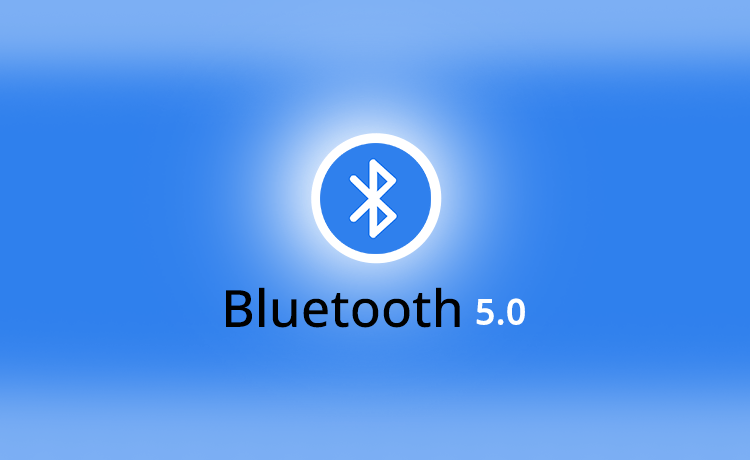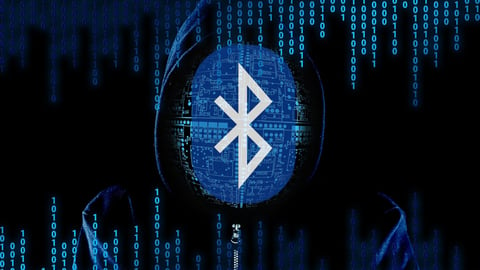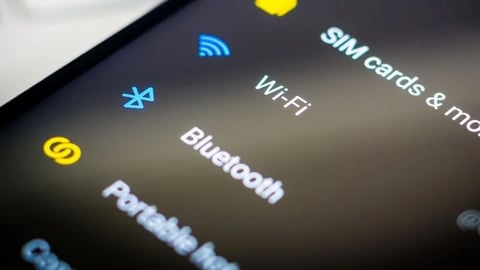Bluetooth 5.0
TECHNOLOGY
Sachin Sardeshpande
12/22/20244 min read


Bluetooth 5.0: A Technological Leap Forward
Bluetooth 5.0, the latest version of the Bluetooth wireless communication standard, was introduced in December 2016 by the Bluetooth Special Interest Group (SIG). It marks a significant evolution in Bluetooth technology, which has been around since 1994. The Bluetooth technology has consistently undergone upgrades to increase its range, speed, and reliability. Bluetooth 5.0 is the result of years of research and development to meet the growing demand for faster, more efficient wireless communication for devices ranging from smartphones to home automation systems. This version comes with many new features, most notably an increased range, faster data transfer speeds, and greater bandwidth, making it a transformative update for industries relying on wireless communication.
The History and Evolution:
The Bluetooth technology itself was first developed in 1994 by engineers at Ericsson, a Swedish telecommunications company. Named after a 10th-century Viking king, Harald Bluetooth, who united Denmark and Norway, the technology’s goal was to provide a universal wireless communication standard for connecting devices over short distances. The first Bluetooth specification, 1.0, was introduced in 1999 and supported data transfer rates of up to 1 Mbps. However, as demands for faster, more stable connections grew, the technology underwent several upgrades. The release of Bluetooth 5.0 in 2016 introduced a leap in both hardware capabilities and software applications. With Bluetooth 5.0, the maximum data transfer rate increased to 2 Mbps, and the range expanded significantly, providing more reliable communication even in large or complex environments.


Key Features and Advantages:
Bluetooth 5.0 offers several advantages over its predecessors. One of the most notable improvements is its increased range. Bluetooth 4.2 supports a range of about 100 meters in open space, while Bluetooth 5.0 can reach up to 240 meters under optimal conditions. This extended range makes it ideal for use in large homes, offices, and industrial settings, where multiple devices need to be connected across wide areas. Another significant benefit is the increase in data transfer speeds. Bluetooth 5.0 supports up to 2 Mbps, doubling the data transfer speed from the previous version, which allows for faster and more efficient communication between devices. Additionally, Bluetooth 5.0 offers greater broadcast capacity, which can be leveraged in applications such as location-based services, asset tracking, and Internet of Things (IoT) networks, providing richer experiences with lower power consumption.
Uses and Applications:
The versatility of Bluetooth 5.0 makes it an essential technology in a wide range of applications. One of the primary uses of Bluetooth 5.0 is in consumer electronics, including smartphones, wireless headphones, and smartwatches. The increased range and speed enable seamless streaming, faster device pairing, and more stable connections. Additionally, Bluetooth 5.0 is a vital component of the growing Internet of Things (IoT) ecosystem. With its low power consumption, Bluetooth 5.0 is well-suited for connecting a wide range of smart devices, from home security systems to wearable health monitors. Its ability to transmit data over longer distances and with lower energy usage makes it ideal for smart homes and industrial applications. Moreover, the new Bluetooth 5.0 features enhance the performance of beacons, allowing businesses to leverage location-based services to send real-time information to customers, providing a personalized experience.
Bluetooth 5.0 in the Automotive Industry
Another exciting application of Bluetooth 5.0 is in the automotive industry. With the rise of connected vehicles and the ongoing development of autonomous driving technology, Bluetooth 5.0 plays a crucial role in improving communication between the vehicle and various devices. The increased range allows for better connectivity in a vehicle's internal network, enhancing features such as in-car infotainment systems, navigation, and telematics. Bluetooth 5.0 can also be used to enable better communication with nearby vehicles, infrastructure, and pedestrian devices, which is key for the development of intelligent transportation systems and vehicle-to-everything (V2X) communication.


Latest Trends and News
As Bluetooth 5.0 continues to gain traction, several emerging trends and developments are shaping its future. One key trend is the integration of Bluetooth 5.0 in smart home technologies. With the growing popularity of smart home devices, such as thermostats, lights, and security cameras, Bluetooth 5.0’s extended range and low power consumption make it the preferred choice for connecting devices in homes. Furthermore, Bluetooth 5.0 is becoming a cornerstone of the healthcare industry, where it is used in wearable health devices and medical monitoring systems to transmit patient data securely and efficiently. Another notable trend is the expansion of Bluetooth 5.0 in the automotive sector, as car manufacturers integrate it into advanced driver-assistance systems (ADAS) and smart vehicle communication. Additionally, Bluetooth 5.0 is playing an essential role in the development of new location-based services and beacons, particularly in retail environments, where it is used for proximity marketing and personalized customer experiences. These trends indicate that Bluetooth 5.0 is not only transforming existing technologies but also driving innovations in industries ranging from healthcare to retail and transportation.
Conclusion:
In conclusion, Bluetooth 5.0 represents a significant advancement in wireless communication technology. With its extended range, faster data speeds, and enhanced capacity, it promises to improve the functionality of a wide variety of devices across multiple industries. From consumer electronics to the automotive and IoT sectors, Bluetooth 5.0 is enhancing the way devices communicate, offering faster, more reliable, and energy-efficient connections. As technology continues to evolve, the future of Bluetooth is bright, and the development of Bluetooth 5.0 is paving the way for the next generation of connected devices and services. With more and more industries adopting Bluetooth 5.0, we can expect to see even more innovative applications and solutions in the years to come.
